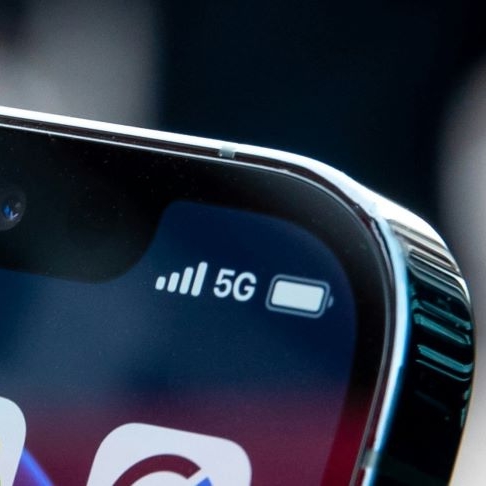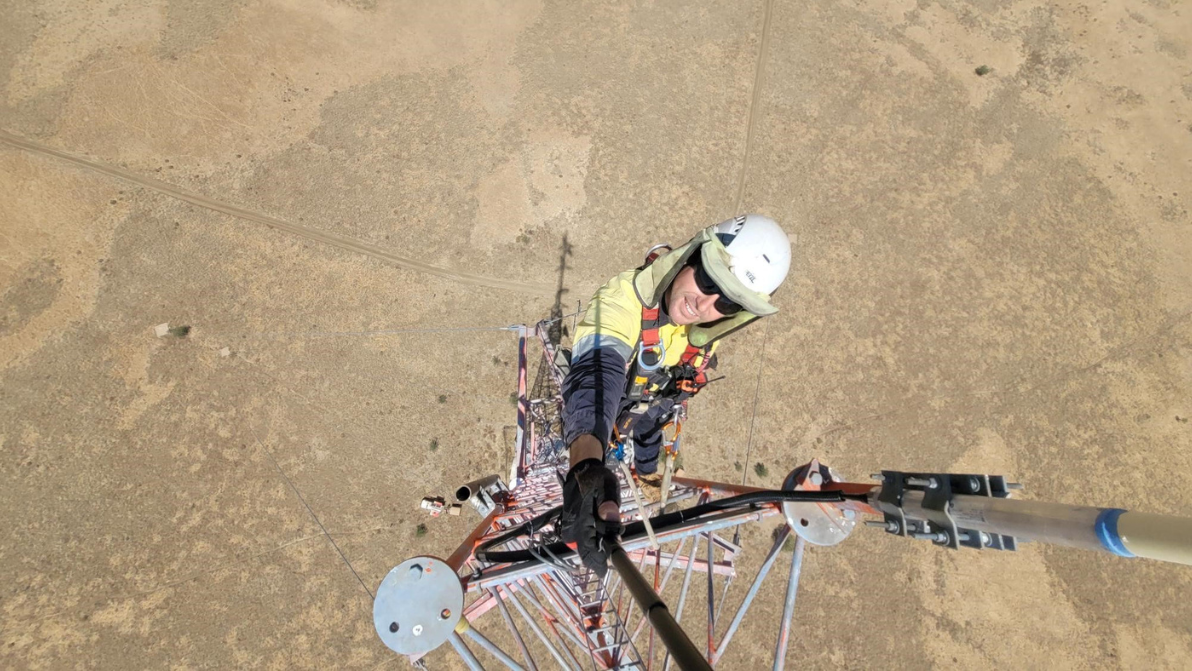The world firsts that built Australia's best mobile network
We're proud to have Australia's best mobile network. It wasn't an easy job to do - but here are all the innovations that have got us here.

Want to feel old? There are now several generations of young Aussies that have never lived without a mobile phone in their lives in some way. But if you were alive in 1987, you might remember the very first 1G phone we brought to market in Australia, back when we were known as Telecom Australia.
Since we first began building out a mobile network for that brick of a phone, we have never stopped. Our mobile network now covers more than 99.7% of the Australian population and our 5G network specifically covers more than 89% of the population.
But to get to this spot, it has meant ongoing innovation and pushing the boundaries of what’s possible. Here are just some of our most recent world firsts and recent Australia firsts. If you'd like to see our full list, you can open up the graphic below.
As of February 2025, we have recorded 66 world firsts and 27 Australian first mobile network achievements.
Our World First Mobile Achievements
➤ 20254 February In collaboration with Ericsson and Qualcomm, achieved a world-first by setting a new record for 5G uplink speeds at 516 Mbps. This milestone supports the growing importance of 5G uplink capabilities as customer applications require increasingly higher upload speeds for live streaming, video conferencing, and real-time data processing with AI. It’s another way we’re continuing to innovate and improve customer experience as we push the boundaries of uplink optimisation, capacity, and resiliency. 24 January Teaming up with Ericsson and MediaTek, we hit a new milestone by reaching a downlink speed of 9.4 Gbps on our live 5G Standalone (SA) network. In the lab we drove the needle even higher, surpassing the 10 Gbps mark in testing on a non-commercial setup. These achievements are important as they lead to improvements in our network and customer devices, pushing the mobile ecosystem for more seamless and resilient connectivity. The headline is speed, but speed is directly proportional to capacity, and consequently, the consistency of customer experience. This means that in places where we have the right spectrum, customers with compatible devices will enjoy a smoother and more consistent experience whether they are streaming, gaming, working remotely or in busy areas and busy times like under the Sydney Harbour Bridge on New Years Eve or during a centre court final at the Australian Open. It's also a big win for emerging applications that need high throughput, such as AI, AR, and VR. This record-breaking achievement was made possible through our collaboration with Ericsson and MediaTek, integrating the Ericsson Radio System base station with the latest 5G Advanced software and MediaTek's Mobile Test Platform at Telstra's Innovation Centre on the Gold Coast. ➤ 202421 October 14 August This deployment marks the world’s first use of these advanced baseband units, or “servers,” in a commercial network. Baseband refers to the brains of the radio network that underpins all the processing related to all customer experience attributes. These new servers are crucial for enhancing the capabilities of our 5G network to bring a superior customer experience and open the gateway to 5G Advanced and 6G technology. From a technical perspective, these baseband units handle essential digital signal processing tasks, such as modulation and encoding, which are vital for managing data traffic. They help to improve the coverage, speed, and overall experience for our customers when downloading, using apps, and streaming content on their mobile devices. Additionally, these servers are future-ready to drive 5G Advanced features including differentiated service experiences such as network slicing. These servers are also more energy-efficient, reducing power consumption and heat generation helping to reduce our emissions. The deployment of six of these Ericsson baseband units at a Telstra aggregation site in Melbourne is expected to reduce power usage by up to 60%. Along with power efficiencies the new capabilities of these servers will increase our capacity in the network to meet our customers’ growing mobile data needs. 22 July 20 June
5G: The longest ever first voice call (VoNR) using 5G standalone on a commercial network We don't think a lot about voice calls these days, especially in the city where most interactions are delivered over mobile data. But in rural and regional areas especially, voice is vital.
With this world record - we made a voice call over our 5G Standalone network at a distance of 99.8 kilometres from the tower that was powering it in Burra, South Australia.
This more than doubles what was capable previously and was made possible using the latest software, spectrum and technology innovation from our partners Ericsson and Qualcomm.
Currently, the 5G standalone tech used to make this call is supported by the Samsung Galaxy S23 and Galaxy S24 range of devices. But more supported devices are expected in the near future.
This builds on our 5G standalone announcement from February where we announced we’ll be bringing a world leading 5G slicing product to market this year, made possible by a newly developed proof-of-value engine.
19 Feb Transmission: King Island 116 km microwave link (9.8 Gbps - 99.99% availability). A world first and tenfold capacity boost to a remote community off Tasmania, King Island, with the launch of Australia’s longest over-water microwave telecommunications link with a throughput capacity of 9Gbps at 99.99% availability.
13 Feb
5G: World first 340 Mbps uplink speed over 5G Standalone using sub 6 GHz frequencies in a live commercial network. This world first achievement enables Telstra customers to enjoy faster and more reliable data uploads on their 5G Standalone (SA) devices, enhancing their experience of sharing videos, photos and live streams. The new 5G Standalone uplink capability combines Telstra's mid-band spectrum holdings to create a massive 140MHz channel for sending data from the device to the network. This is complemented by a 240MHz channel for receiving data from the 5G SA network to the device, delivering up to 3.6 Gbps in downlink speed and an uplink speed of 340 Mbps – the fastest in the world using spectrum under 6GHz. ➤2023December 28 Feb
5G: World first completion of long distance 5G data call over mid-band spectrum.  This world-first achievement was conducted at Burra in South Australia and made possible through a new software feature that extends the maximum cell range from 15km out to 100km. The extended range feature enables us to broaden the benefits of 5G even more for rural and regional areas, delivering 5G capacity and downlink speeds to more customers.
Although situations allowing a full 100km extension will be limited due to the lack of line of sight in some areas, there are many areas in regional/rural Australia where effective 5G coverage will now reach well beyond 15km, meaning more 5G coverage in more places. ➤2022 November
5G: Fastest downlink speed (7.3Gbps) in a commercial network (5G Standalone) August
5G: World first deployment with Ericsson of fully automated 5G network slicing on a commercial network – August, 2022 5G network slicing allows us to carve up our world-leading mobile network into separate, secure slices that can be finely tuned to suit the needs of many customers and customer applications. These slices can be tailored to provide an assured network experience with attributes such as minimum committed up and down speeds, lower latency for faster responsiveness of applications, critical application prioritisation or even network resource separation for greater security and reliability. Using this new set of capabilities allows Telstra to create solutions to meet the needs of our business partners and industries, leveraging wireless networks as a primary connectivity solution.
|
Our Australian-first network achievements
➤2024FebTransmission: OneWeb first customer trial in Australia Testing to support regional Australia on low earth orbit satellite (LEO) to achieve a two-way peak data rate of 195Mbps using standard commercial hardware. ➤202212 Dec
5G: First Cloud RAN deployment on a commercial network This technology involves virtualising our mobile base station sites’ RAN baseband and uses two mid-band 5G frequencies in 2600MHz and 3600Mhz with the Cloud RAN infrastructure. By enabling this infrastructure via the cloud at our exchanges, rather than relying on the base station itself, we can better utilise compute resources which is especially important as we make our network smarter and more resilient. Or put a bit more simply, adding Cloud RAN to the network means that we can better manage our capacity across the network to help make sure that areas of high demand, particularly large events and seasonal hotspots, can operate at the high standard we know you expect. ➤202110 Mar5G: Australian first deployment of re-used 3G spectrum on a 5G network This development moved some of our 850Mhz spectrum that was previously used on our 3G network to our 5G network, enabling low band 5G on our network for the first time, which greatly increased the range of our 5G network in regional areas. As we move towards shutting down our 3G network later in 2024 and re-purposing the rest of its spectrum across our 5G and 4G spots, this initial deployment marked a big milestone in this process. ➤202026 May
5G: First Australian 5G mmWave capable commercial mobile device in market We launched the first mmWave capable device in Australia in 2020, the Telstra 5G Wi-Fi Pro – which, when we tested on our live network hit speeds over 2Gbps, a giant leap for the time. Just a few months later, we doubled that – hitting 4.2Gbps in September 2020. mmWave 5G delivers more bandwidth – and with more bandwidth, it means we can better manage peak congestion periods so you can still post a selfie with 100,000 others at the MCG, for example. At the time, mmWave was also only available in select high traffic areas across the country, but if you have a device that supports it, such as Google’s latest Pixel 8 Pro, you can now find it in more than 300 sites across Australia. 1 May
5G: Telstra first Australian Mobile Network to enable end to end 5G Standalone (SA) across its Network 5G, at first, relied on 4G infrastructure to help devices communicate. Using this infrastructure allowed us to rapidly roll out upgrades enabling 5G radio in many places providing improved capacity and speeds. The introduction of 5G Standalone provides new network experiences using a range of features to support not only consumer services but also new and emerging enterprise and industrial digitisation use cases. Additionally, this technology increases our capabilities in automation, security and resiliency. 24 Sep 5G: New network download speed record of 4.2 Gbps with mmWave 5G 24 Sep 5G: New network record of 200Mbps 5G mmWave device Telstra 5G Wi-Fi Pro ➤201620 Sep5G: Reimagining the future with 5G first live trial in Australia |
These are just some of the great innovations we've been able to lead across Australia and the globe. There are dozens more you can explore below, and we hope even more than that to come in the future.


